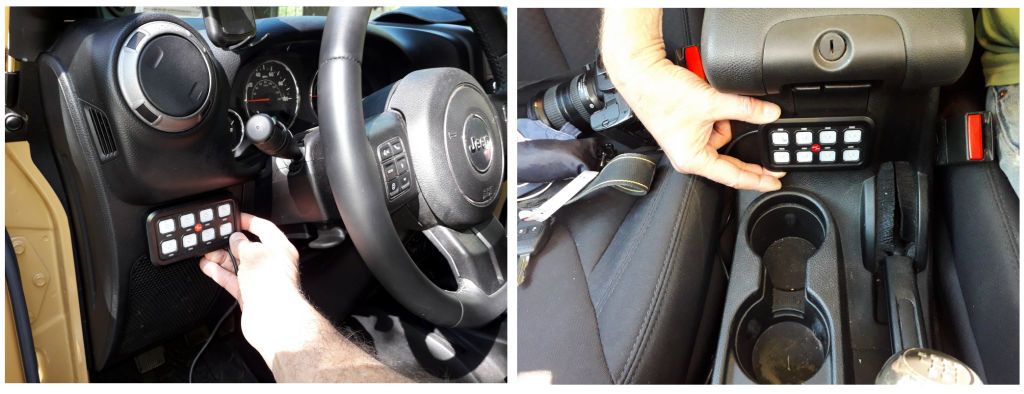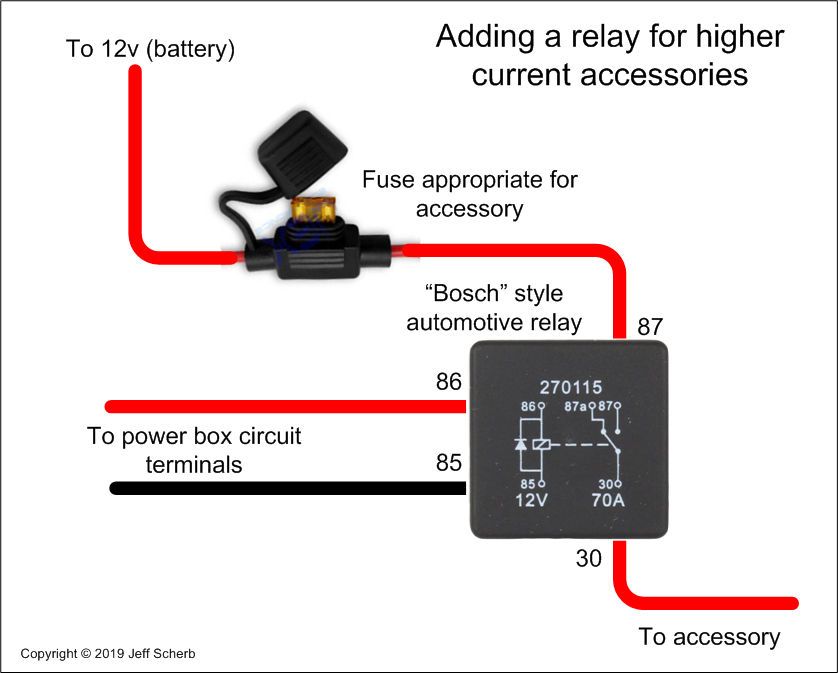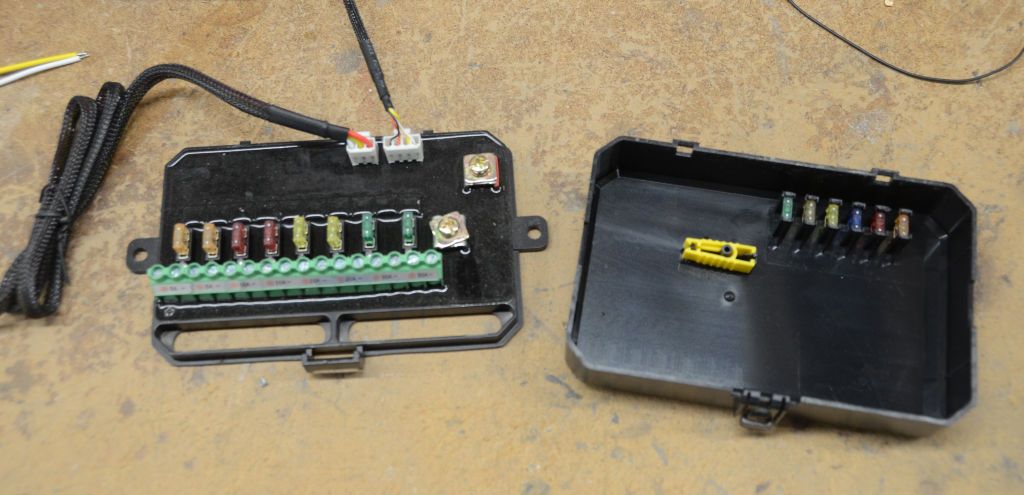jscherb
Expedition Leader
From time to time companies contact me and ask me to test or review their products. Auxbeam recently sent me a switch panel to review; I'm pretty impressed with it so I decided to do a thorough writeup.
Ths is one of their advertising images:
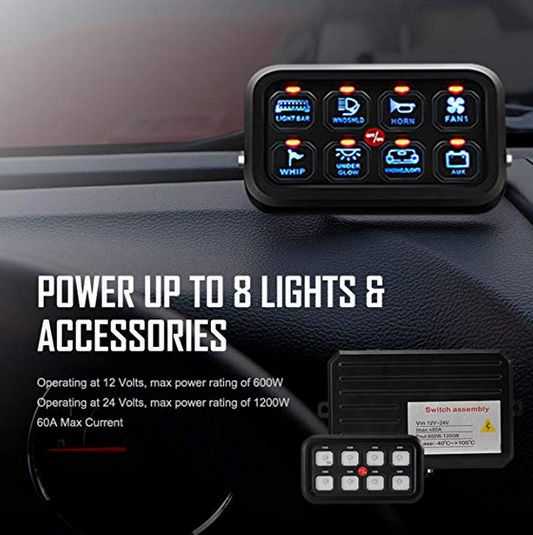
Here's what's in the box:
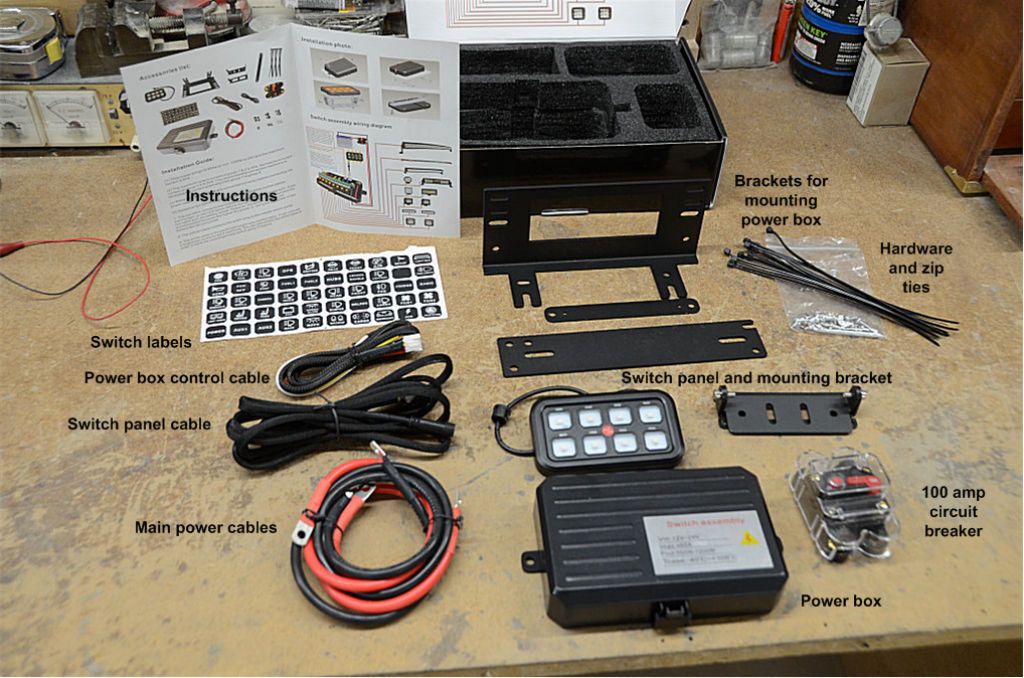
All of the components seem to be high quality. The switch panel case, for example, is aluminum instead of plastic. Brackets are provided for mounting the power box in the engine compartment, but I found that they weren't needed for installation in a '13 JK. For other vehicles the bracket may be useful. Cables are good lengths, especially the cable that runs from the power box in the engine compartment to the switch panel - it's 10' long, which should reach anywhere you're likely to put it within reach of the driver. Fifty different switch labels are provided:
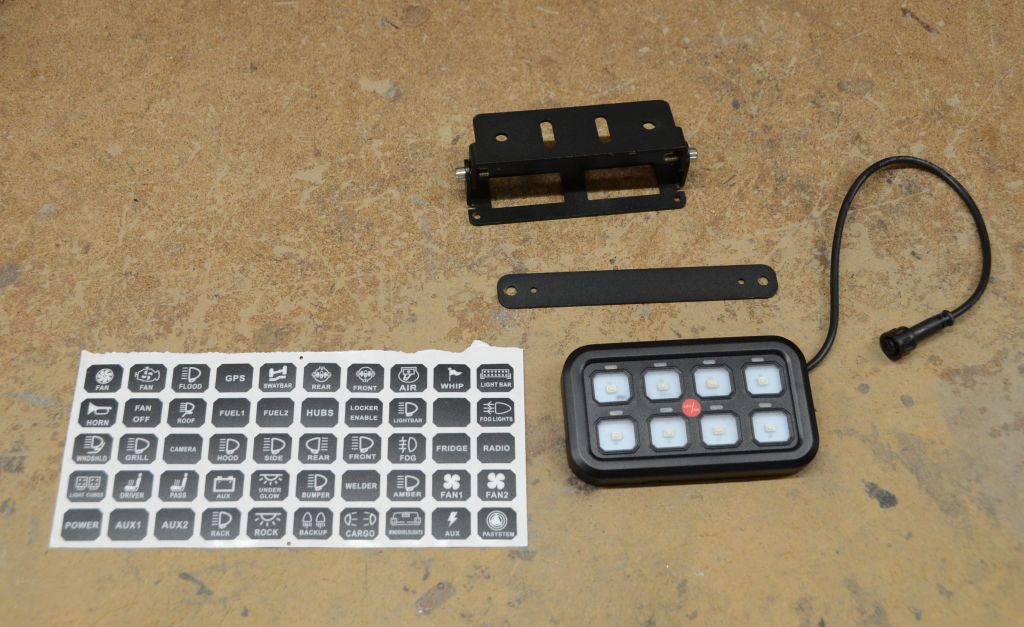
The switch panel comes with a flat mounting base and an angle mount, depending on where you decide to mount it you may only need the flat base, you might need the angle mount as well, or you might need to do something custom. There are good places to mount it in a later model JK that only require the supplied parts.
The power box mounts under the hood, preferably near the battery. The cables provided are plenty long enough for several locations under the hood of the '13. The power box cover has spare fuses, as well as a fuse puller. Very thoughtful. Inside the box there are fuses for each of the 8 circuits; connections are with simple screw terminals. Another thoughtful touch - there's an LED for each circuit, they're just barely visible in this photo, between each fuse and its terminals - these LEDs light up if that fuse is blown to make it easy to check the fuse without pulling it.
A 100-amp circuit breaker with terminal insulators and a plastic cover is provided. The power box is rated for 60 amps, I'll explain why it's a 100-amp breaker when I explain the circuit capacity in more detail.
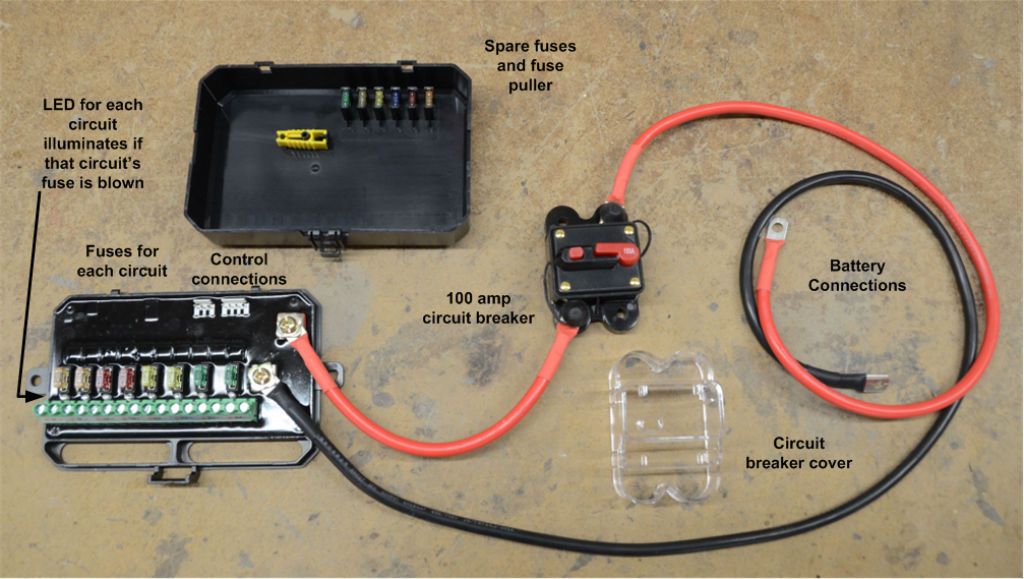
This is a look in the engine compartment of a '13 JK. The two main components can mount easily - the circuit breaker can mount on the shield between the battery and the engine, and the power box can mount to the Jeep's fuse panel cover or to the air cleaner housing. The supplied power box mounting brackets are not required for either of these locations. The power box control wiring will need to be connected inside the Jeep's fuse panel, so these locations for the power box are very convenient.
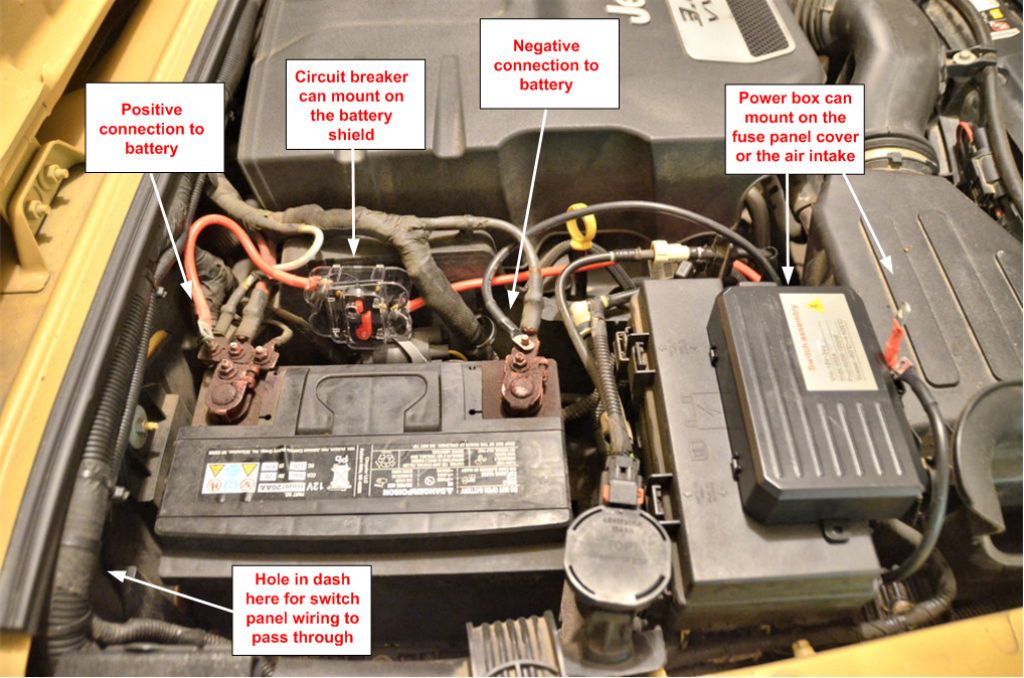
The cable for the switch panel connects to the power box and needs to be run into the interior; Jeep has thoughtfully provided a pass-through hole in the firewall just behind the battery. It's hidden behind the large wiring loom and some firewall shielding in the location pointed to in the photo above.
Ths is one of their advertising images:

Here's what's in the box:

All of the components seem to be high quality. The switch panel case, for example, is aluminum instead of plastic. Brackets are provided for mounting the power box in the engine compartment, but I found that they weren't needed for installation in a '13 JK. For other vehicles the bracket may be useful. Cables are good lengths, especially the cable that runs from the power box in the engine compartment to the switch panel - it's 10' long, which should reach anywhere you're likely to put it within reach of the driver. Fifty different switch labels are provided:

The switch panel comes with a flat mounting base and an angle mount, depending on where you decide to mount it you may only need the flat base, you might need the angle mount as well, or you might need to do something custom. There are good places to mount it in a later model JK that only require the supplied parts.
The power box mounts under the hood, preferably near the battery. The cables provided are plenty long enough for several locations under the hood of the '13. The power box cover has spare fuses, as well as a fuse puller. Very thoughtful. Inside the box there are fuses for each of the 8 circuits; connections are with simple screw terminals. Another thoughtful touch - there's an LED for each circuit, they're just barely visible in this photo, between each fuse and its terminals - these LEDs light up if that fuse is blown to make it easy to check the fuse without pulling it.
A 100-amp circuit breaker with terminal insulators and a plastic cover is provided. The power box is rated for 60 amps, I'll explain why it's a 100-amp breaker when I explain the circuit capacity in more detail.

This is a look in the engine compartment of a '13 JK. The two main components can mount easily - the circuit breaker can mount on the shield between the battery and the engine, and the power box can mount to the Jeep's fuse panel cover or to the air cleaner housing. The supplied power box mounting brackets are not required for either of these locations. The power box control wiring will need to be connected inside the Jeep's fuse panel, so these locations for the power box are very convenient.

The cable for the switch panel connects to the power box and needs to be run into the interior; Jeep has thoughtfully provided a pass-through hole in the firewall just behind the battery. It's hidden behind the large wiring loom and some firewall shielding in the location pointed to in the photo above.



